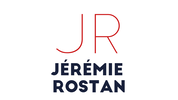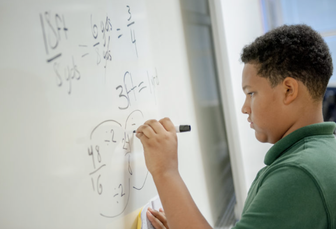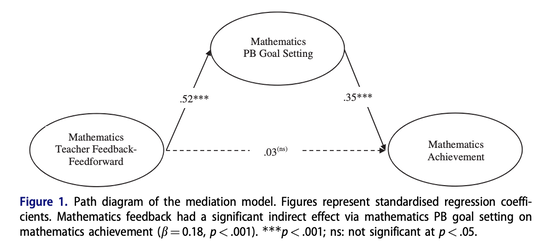The study examined a sample of 362 Australian high school students in grades 9, 10 and 11. Through a single survey, students were asked to report their most recent score on the numeracy component of the National Assessment Program, as well as their perception of their Mathematics teacher’s feedback and their own goals-setting habits in this discipline. More precisely, the researchers were interested in two independent variables:
In line with Goal-Setting Theory, the hypothesis was that teacher “feedback-feedforward” would encourage “personal best” efforts which, being specific and challenging, should have a positive effect on motivation and performance. Indeed, this is what the data confirmed. As can be seen in the diagram below, “teacher feedback–feedforward did not have a significant direct effect on achievement but had a significant indirect effect via PB goal setting. This suggests that PB goal setting fully mediated the link between mathematics teacher feedback–feedforward and achievement.” Based on their findings, the researchers concluded that:
“it is important to consider strategies for providing effective feedback–feedforward. Along these lines, Hattie and Timperley (2007) outline three questions that teachers can aim to answer with each of their students that collectively provide both corrective information and improvement-oriented guidance. The first question (‘where am I going?’) is meant to remind the student about the goal of the overall assignment and about the student’s individual learning goals. The second question (‘how am I doing?’) is meant to provide students with explicit feedback on their progress and areas of strength and weakness. The third question (‘what is next?’) aims to provide students with specific feedforward information and strategies that can help the students progress their learning and revise their goals. Taken together, answering these three questions may help teachers provide more individualised and targeted feedback–feedforward to their students.” Reference Burns, E. C., Martin, A. J., & Evans, P. A. (2019). The role of teacher feedback–feedforward and personal best goal setting in students’ mathematics achievement: a goal setting theory perspective. Educational Psychology, 1–19. doi:10.1080/01443410.2019.1662 Credit (Picture) Summit Education Initiative: A student completes a math problem at East Community Learning Center in Akron. (Photo: Mike Crupi Photography) Comments are closed.
|
|
Proudly powered by Weebly


